As many of you may know, the PE Exam is switching to a computer-based format (CBT) version of the PE exam this month in April 2022. The final open book, paper-based PE exam was administered in October 2021.
Sorry to be the bearer of bad news if you didn’t already know that. To the hundreds of candidates who rushed out to get their studying in and pass this final test administration, congratulations. Though, you’re probably not reading this blog post if you already passed.
For the rest of you out there (who haven’t yet passed the exam), this shift to CBT version of the PE exam has a number of major implications. Let’s explore some need-to-know info and strategies to crush the new CBT version of the exam.
The Implications
The most significant change with the NCEES shift to the CBT version of the PE exam (beyond the obvious that it’s no longer paper-based), is that the test is no longer open book. Previously, you could bring in your Civil Engineering Reference Manual by Michael R. Lindeburg, marked up practice exams, and whatever other materials you wanted. Heck, you could bring in some comic books if you wanted (though not advised).
This is going to be one of the largest adjustments for candidates, epically if you’ve already taken the exam and failed once. In lieu of these DIY reference materials, you now get access to one and only one reference document – the new PE Reference Handbook from NCEES. This is a searchable document available directly onscreen during the exam.
In fact, to aid those studying for the PE exam, the NCEES offers a completely free PDF copy online. And this is critically important, as codes have been updated in this new electronic version, so prep will be necessary to familiarize yourself with this shaken-up reference system.
The other major change involves the nature of how the NCEES tests your knowledge. Previously, the PE exam was 100% multiple-choice. Now, however, alternative item type questions will be prominently featured. Multiple-choice questions will still make up the vast majority of problems; however, you will no have to contend with multiple-correct problems (meaning more than one answer choice could be correct), point-and-click questions (testing your ability to point to the proper marker on graphs), drag and drops, and fill-in-the-blanks, among others.
Additionally, no partial credit will be doled out for answers that are ‘close,’ but not 100% correct. It’s all or nothing. Thus, you can probably start to feel the weight of this shift and the seriousness of its implications.
However, with that said, this formatting shift shouldn’t come as too big of a surprise for PE candidates, as the FE exam has operated under this paradigm for years. In fact, there’s a good chance you took the CBT format of the FE exam a few years ago. Thus, while it frankly stinks you can no longer use your own reference materials, and now have to contend with these alternative item type problems, it shouldn’t be a total shock to the system.
Lastly, before we move onto our suggested adjustments to your study plan, note that one silver lining is that the exam is now offered year round. Previously, you could only take the PE exam on specific dates, which could throw off your schedule based on work or personal commitments. This new year round offering provides added flexibility.
How To Adjust Your Study Habits & Schedule
Knowing that the PE exam format is changing in a radical way, the question that always follows naturally is: will this affect how I should study? And that answer is (of course) “yes and no.”
In reality, the underlying content and processes being tested are not changing. It’s the same general substance, same equations, and examination of your thought processes and math skills. It’s just the way the NCEES gauges your readiness that has changed. And I know that’s somewhat esoteric, so let’s get into the nitty gritty.

In my opinion, practice work in the weeks leading up to the exam is more important than ever. It’s only through practice that you’ll truly master the art of the CBT. You can watch video lessons all day and take PE exam classes until your head explodes, but it won’t do you any good if you can’t efficiently search the new the PE Reference Handbook, find the equation you’re looking for, solve for the given the facts, and answer the alternative item type problems in the correct fashion. In short, practice is more important than ever.
I would also suggest relying less on your Civil Engineering Reference Manual and other print-based reference materials during prep. Yes, these materials are helpful and provide top-notch info, but don’t use them as a crutch. Don’t highlight them, tab them or color code them (like candidates of yesteryear did).
Some might disagree with me on that point, but if you were training for a marathon, would you do so by running 100-meter wind sprints? Or by jogging long distances, slowly building up close to 26.2 miles? Honestly, I’m not a runner so I can’t say for certain, but I assume it would be by conditioning your body to run long distances. The same concept applies here.
Train your brain to rely on the new digital handbook. Keep that PDF open at all times during your studies and condition yourself to use the search function.
Along with this suggestion, make sure to get your hands on practice material that incorporates new alternative item types. In a similar vein to my point about using the digital reference handbook, practice work that focuses exclusively on multiple-choice problem types won’t do you any good. Yes, multiple-choice questions will make the up the lion’s share of problems you’ll encounter on the exam, but you don’t want any surprises on exam day.
Not all prep companies have updated their PE exam study materials as of yet, so make sure whatever company you use to get yourself ready has incorporated these alternative problem types into their coursework. That is vitally important.
Conclusion
The new CBT format of the PE exam sounds nerve-wracking, but it doesn’t have to be. It’s still the same exam. Yes, it’s no longer open book and there are new problem types, but it’s still the same material, evaluating your same old knowledge and abilities. Incorporate plenty of practice work into your study schedule, with a focus on using the new digital handbook, and you’ll be golden.


